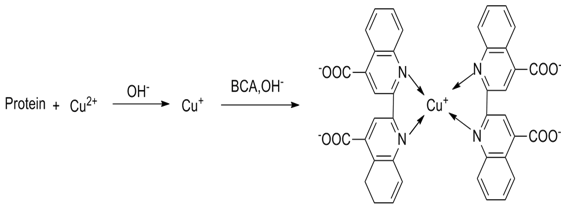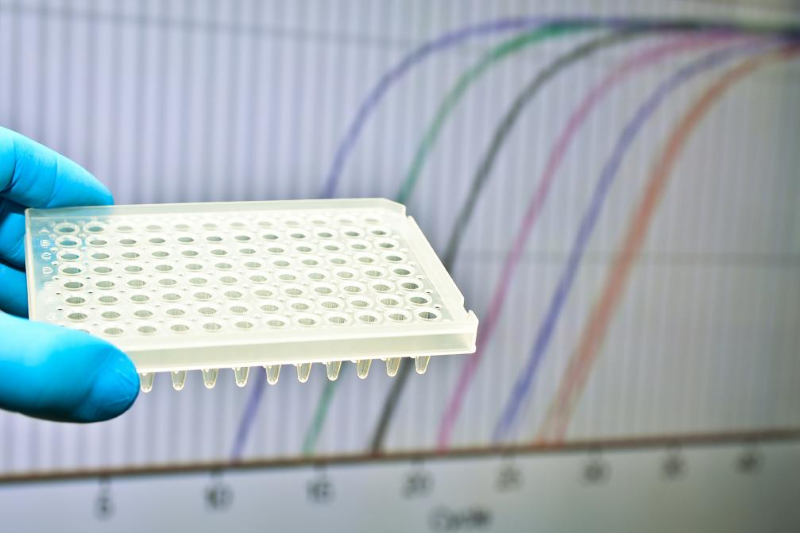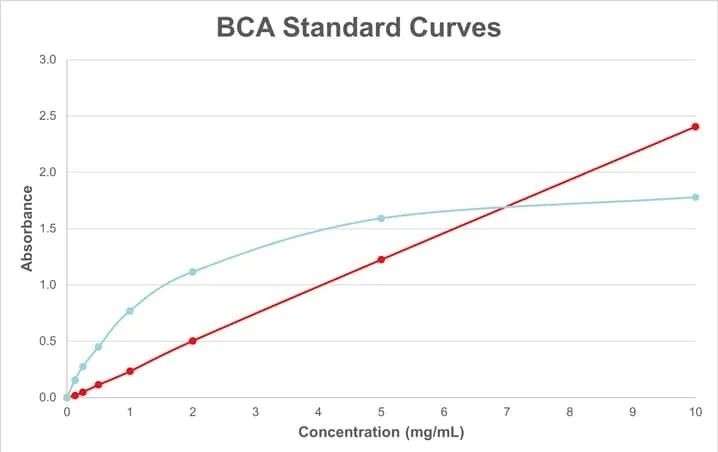The microplate reader is a common laboratory instrument widely used in protein concentration measurement and other biochemical experiments. Its principle is based on the light absorbance method, which determines the concentration of the target substance in the sample by measuring the light absorbance of the sample solution at a specific wavelength. When using a microplate reader, the protein or other biochemical substances in the sample usually react with a specific color reagent to generate a product with specific light absorption characteristics. The instrument emits light of a specific wavelength, and after passing through the sample, the detector measures the intensity of the transmitted light.
By comparing the absorbance with the standard curve, the concentration of the target substance in the sample can be accurately calculated. The standard curve is usually made of a series of standard samples of known concentrations, and its absorbance is used to calibrate the microplate reader to ensure the accuracy of the measurement results. The high sensitivity and high precision of the microplate reader make it an essential tool for biochemical experiments such as protein concentration measurement, enzyme activity analysis, and cell proliferation experiments.
Protein is an important biomacromolecule in living organisms, and its content determination is of great significance in biological science research and biotechnology industry. The microplate reader is a precision instrument used to detect the concentration of biomolecules, which quantitatively analyzes the target molecules based on the color change produced by enzyme-catalyzed reactions.

Welso shared the BCA method (colorimetric method) for determining protein concentration. The principle is that protein reacts with copper ions (Cu²⁺) under alkaline conditions to form a purple-blue complex. The complex has a characteristic absorption peak at a specific wavelength (usually 562 nm), and its absorbance is linearly proportional to the protein concentration in the sample. By measuring the absorbance with an enzyme reader and comparing it with the standard curve, the protein concentration in the sample can be accurately calculated. This method is widely used for rapid determination of protein concentration because of its high sensitivity and simple operation.
Experimental Purpose
Master the use of a microplate reader and become familiar with its operation process and functions
Learn the basic principles and operation steps of protein quantitative analysis.
Measure protein concentration by BCA method and verify the accuracy of experimental results.
Experimental materials and instruments
Materials
Standard protein solution (such as bovine serum albumin)
Protein solution sample to be tested
BCA solution
96-well microplate
Reagents
Copper sulfate
Sodium sulfate
Sodium hydroxide, etc.
Instruments
ELISA reader
Electronic balance
Pipettors
Thermostatic water bath

Experimental steps
●Setting up Standard curves
A. Prepare BCA solution according to kit instructions.
B. Dilute the protein standard solution with deionized water to different concentration gradients (such as 0, 1, 2, 4, 8, 16, 32, 64, 128, 256 ug/mL)
C. Add the diluted standard solution to each 96-well microplate, 100μL per well.
D. Add 100μL BCA solution to each well and mix well.
E. Place the microplate in an ELISA reader and measure the absorbance value at a wavelength of 562nm
Set up a standard curve with protein concentration as the horizontal axis and absorbance value as the vertical axis

●Sample determination
A. Dilute the protein sample to be tested with deionized water to an appropriate concentration.
B. Add the diluted samples to a 96-well microplate, 100 μL into each well.
C. Add 100 μL of BCA solution to each well and mix well.
D. Place the microplate in an ELISA reader and measure the absorbance value at a wavelength of 562 nm.
●Result analysis
Based on the absorbance value of the measured sample, find the corresponding protein on the standard curve, and then calculate the protein concentration of the sample solution based on the sample volume.
The BCA method is a commonly used protein quantitative analysis method with the advantages of simple operation, high sensitivity and strong specificity. During the experiment, special attention should be paid to preventing protein denaturation, degradation and contamination to ensure the accuracy of the results. The results of this experiment show that the BCA method can effectively determine the concentration of protein samples and provide reliable data support for subsequent protein research.
This experiment successfully used the ELISA instrument and BCA method to determine the concentration of protein samples, verified the feasibility of the method, and provided an important reference for protein quantitative analysis.

Follow official account